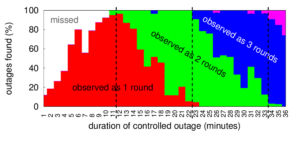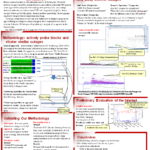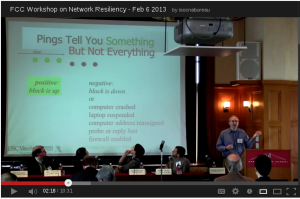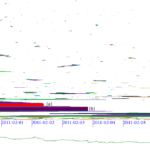The paper “The Need for End-to-End Evaluation of Cloud Availability” was published by PAM 2014 in Marina del Rey, CA (available at http://www.isi.edu/~zihu/paper/cloud_availability.pdf).
From the abstract:
People’s computing lives are moving into the cloud, making understanding cloud availability increasingly critical. Prior studies of Internet outages have used ICMP-based pings and traceroutes. While these studies can detect network availability, we show that they can be inaccurate at estimating cloud availability. Without care, ICMP probes can underestimate availability because ICMP is not as robust as application-level measurements such as HTTP. They can overestimate availability if they measure reachability of the cloud’s edge, missing failures in the cloud’s back-end. We develop methodologies sensitive to five “nines” of reliability, and then we compare ICMP and end-to-end measurements for both cloud VM and storage services. We show case studies where one fails and the other succeeds, and our results highlight the importance of application-level retries to reach high precision. When possible, we recommend end-to-end measurement with application-level protocols to evaluate the availability of cloud services.
Citation: Zi Hu, Liang Zhu, Calvin Ardi, Ethan Katz-Bassett, Harsha Madhyastha, John Heidemann, Minlan Yu. The Need for End-to-End Evaluation of Cloud Availability. Passive and Active Measurements Conference (PAM). Los Angeles, CA, USA, March 2014.





